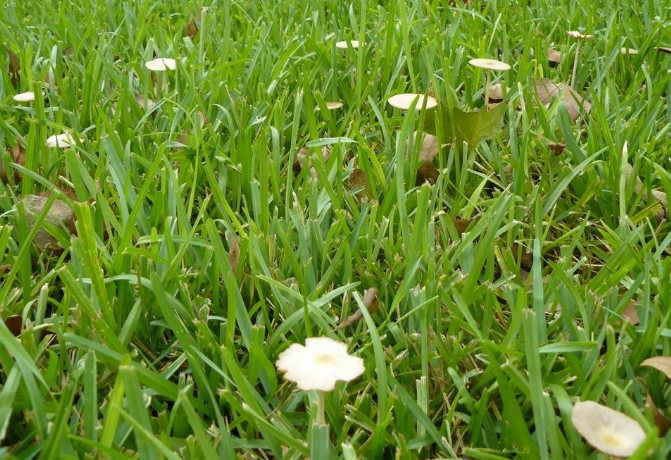
Many folks have noticed a lot of mushrooms popping up around Central Texas recently, during the late summer and on into the fall.
“It’s more than we’ve seen in a while. I haven’t seen it like this in probably six or seven years,” says Jerry Naiser, Travis County master gardener volunteer. “They are everywhere. ... We see all types (of mushrooms). They are fungi.”
Three factors are necessary for all these mushrooms to be growing, Naiser says.
First, he mentioned the rain. “You’ve got to have heavy moisture,” he says, but not saturated soils (because the mushrooms can’t live in saturated soils). “Mushrooms don’t have any skin,” he said. “That’s why they grow so fast, because they are absorbing water directly into the tissue.”
Then, secondly, he says, “You’ve got to have the decomposition of organic matter under the soil surface ... that the mushrooms are feeding from.”
“Where we see them heaviest is where somebody took a tree out, and they ground the stump out,” Naiser says. “The mushrooms are actually the fruiting body of the fungus.”
Also, thirdly, aiding in the rise in mushroom growth is the temperature.
The like the kind of weather such as the type of mild, wet weather, in the mid to upper 80s and low 90s, that Central Texas has had recently, Naiser says.
Such conditions have all come together of late for the mushroom growth, he says.
“Everything has to be right for (mushrooms to grow), and that includes the moisture,” he says.
(In one other unusual circumstance, mushrooms grow a lot, he mentioned: “The other place we see them is in landscape bedding where they use dyed mulches.”)
According to the Missouri Botanical Garden, mushrooms are not harmful and are common. “They will naturally disappear as they age, or they may be collected and composted, knocked down with a rake or hoe, or mowed over with your lawnmower.”
Of course, precautions are in order. The Missouri Botanical Garden website instructs: “Mushrooms should never be collected and eaten unless you are expert in their identification. To the novice gardener, many poisonous mushrooms can look very similar to edible ones. Don’t take a chance.”
Naiser agrees. “It’s not a good idea to eat anything off the ground that you don’t know what it is,” he says. “Buy your mushrooms at the store.”
What’s that flower?
Occasionally, a surprise will pop up in the yard. At my house, some red flowers recently started to bloom at an odd spot in front of the garage door. I did not plant them there, but how lucky anyway.
These plants were identified by the helpful services of the Travis County Master Gardeners Association, after I emailed a photo and asked for information. The response identified the plant as an oxblood lily (also called by some a “schoolhouse lily”). It also cited information from southernbulbs.com that said “these hardy plants frequently make appearances in older neighborhoods of Central Texas.”
That source continues on, adding, “Originally a native of Argentina, these naturalized bulbs were introduced to Texas by German settlers. The name refers to the vermilion red, amaryllis-like flowers they produce. These are tough plants that will naturalize in almost all locations. Although they will grow almost anywhere, the flowers hold up best when planted in partial shade to full sun. After flowering, they send up strappy, bright green foliage which matures in the heat of the following summer or late spring. You can leave Oxblood lilies undivided for years, and they will come back every year with the fall rains. They bloom around September and their foliage remains green all winter.”
Naiser also added that “bulbs can stay in the ground for years (and not bloom), until conditions are right.” Those conditions can include “soil temperature, moisture and the number of cold days. Those things can vary, depending on the type of bulb,” he says.
























